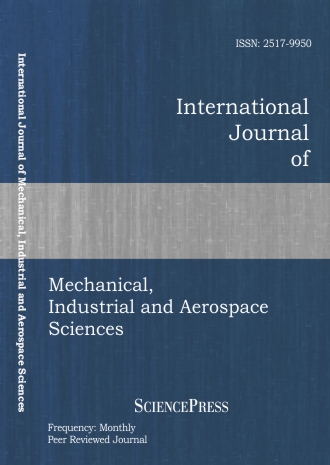
Scholarly
Volume:3, Issue: 4, 2009 Page No: 386 - 391
International Journal of Mechanical, Industrial and Aerospace Sciences
ISSN: 2517-9950
1366 Downloads
A Study on the Quality of Hexapod Machine Tool's Workspace
One of the main concerns about parallel mechanisms is the presence of singular points within their workspaces. In singular positions the mechanism gains or loses one or several degrees of freedom. It is impossible to control the mechanism in singular positions. Therefore, these positions have to be avoided. This is a vital need especially in computer controlled machine tools designed and manufactured on the basis of parallel mechanisms. This need has to be taken into consideration when selecting design parameters. A prerequisite to this is a thorough knowledge about the effect of design parameters and constraints on singularity. In this paper, quality condition index was introduced as a criterion for evaluating singularities of different configurations of a hexapod mechanism obtainable by different design parameters. It was illustrated that this method can effectively be employed to obtain the optimum configuration of hexapod mechanism with the aim of avoiding singularity within the workspace. This method was then employed to design the hexapod table of a CNC milling machine.
Authors:
Keywords:
References:
[1] D. Ghablat, P. Wenger and Angeles J., "The iso-conditioning loci of a